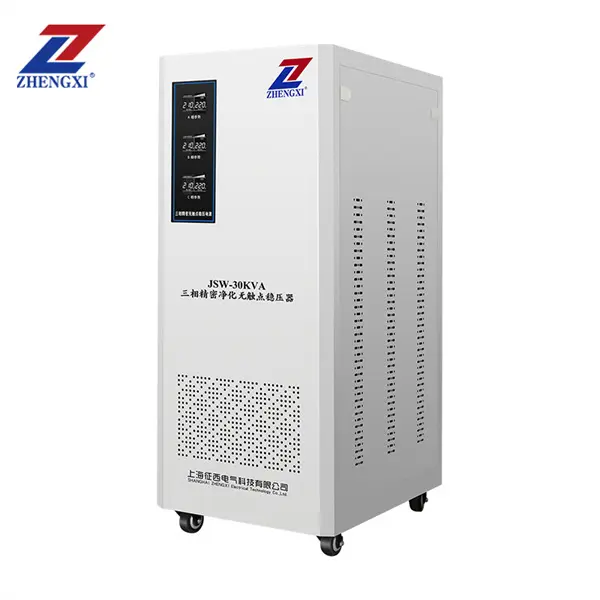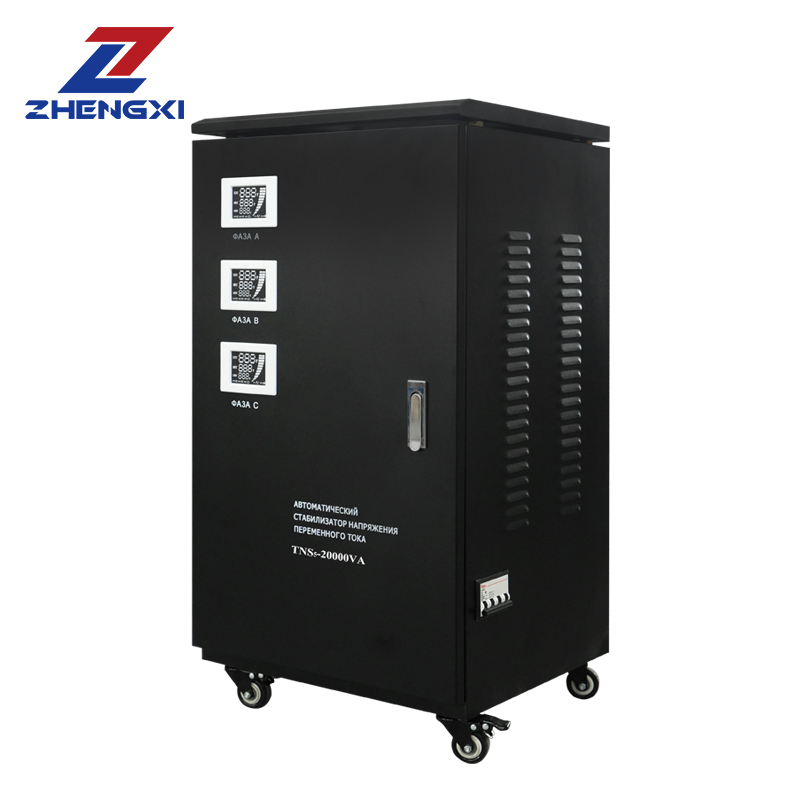Elevators are sophisticated electromechanical systems requiring stable, high-quality power to guarantee smooth operation, passenger safety, and equipment longevity. Inconsistent voltage—whether sags, surges, or transient spikes—can compromise control systems, damage motors, and even lead to unexpected stoppages. A dedicated voltage stabilizer for elevators serves as an essential safeguard, actively conditioning incoming power and preventing grid irregularities from disrupting lift operations.
The Risks of Voltage Fluctuations in Elevator Systems
Voltage variations beyond ±10% of nominal levels (e.g., below 200V or above 240V in 220V networks) arise from:
- Grid Overloads: Peak demand causing brownouts
- Switching Faults: Transformer inrush currents or short-circuits
- Generator Transfer: Transition between mains and standby power
- Weather Events: Lightning or wind damage impacting supply lines
Impact on Elevators:
- Traction Motor Stress: Overheating from under- or over-voltage accelerates winding insulation breakdown.
- Control Logic Errors: Programmable controllers and drives may reset or fault, halting operations.
- Door Mechanism Malfunctions: Erratic voltage leads to inconsistent opening/closing, risking passenger injury.
- Emergency Circuit Failure: Backup lighting, alarm systems, and communication panels rely on correct voltage to function.
- Passenger Safety Threats: Unexpected stoppages mid-shaft or abrupt deceleration compromise trust and compliance.
How Elevator Voltage Stabilizers Work
A quality voltage stabilizer continuously monitors the input voltage, detects deviations, and corrects the output within a tight tolerance (typically ±1–3%).
- Sensing Circuitry: Precision sensors sample each phase in real time.
- Control Unit: A microprocessor calculates required corrections.
- Correction Mechanism: Depending on type—servo-driven autotransformer, IGBT static switching, or hybrid—the device smoothly adjusts voltage.
- Regulated Output: Delivers consistent voltage to elevator controllers, drives, and safety circuits.
Elevator-Specific Features:
- Stepless Regulation: Eliminates sudden voltage steps that can jerk elevator cars.
- High Surge Capacity: Manages motor starting currents up to 8–10 times rated load.
- EMI/RFI Filtering: Suppresses noise that can interfere with sensitive control electronics.
- Fast Response (<5 ms): Prevents brief dips from triggering fault conditions.
Types of Voltage Stabilizers for Elevators
| Type | Mechanism | Ideal Application |
|---|---|---|
| Servo-Controlled | Motorized brush on an autotransformer | Budget installations; moderate fluctuation areas |
| Static (IGBT) | Semiconductor switching for rapid correction | Modern VFD-equipped elevators; silent, minimal wear |
| Hybrid | Combines coarse transformer adjustment + fine static correction | High-rise buildings; extreme grid instability zones |
Tip: Static IGBT stabilizers are preferred for high-traffic lifts due to silent operation, minimal moving parts, and near-instant correction.
Top 5 Reasons to Install a Stabilizer in Your Elevator System
- Regulatory Compliance & Safety: Meets standards like EN 81-20 requiring uninterrupted power for emergency functions.
- Reduced Downtime: Voltage-related faults account for ~35% of unscheduled elevator maintenance calls; stabilizers can cut service visits by 50%+.
- Extended Equipment Life: Stable voltage prolongs motor and drive component lifespan by 3–5 years, lowering lifecycle costs.
- Energy Efficiency: Prevents overcurrent draw from voltage peaks, saving up to 10% on lift motor energy consumption.
- Enhanced Passenger Experience: Consistent ride quality, reliable door operations, and fewer unexpected stops boost occupant confidence.
Key Specifications for Elevator Voltage Stabilizers
When selecting a stabilizer, look for:
- Input Range: ±25–35% correction (e.g., 150–280 V for 220 V systems)
- Surge Rating: ≥800 A instantaneous absorption
- Efficiency: ≥97% at full load to minimize heat and losses
- Bypass Switch: Manual or automatic bypass for maintenance without service interruption
- Ingress Protection: IP23 or higher for machine room environments
- Certifications: CE, ISO9001, RoHS, FCC compliant
Sizing Tip: Base on the starting current rather than running load. For example, a 10 kW elevator motor may need a 25 kVA stabilizer to handle inrush surges.
Installation & Maintenance Best Practices
Installation:
- Position stabilizer upstream of the elevator control panel, post-main circuit breaker.
- Ensure proper grounding (<1 Ω) and ambient temperature below 40 °C.
- Maintain at least 30 cm clearance around the unit for ventilation.
Maintenance Schedule:
| Interval | Tasks |
|---|---|
| Quarterly | Inspect connections, clean dust filters |
| Biannually | Test correction response, verify alarm functions |
| Annually | Perform load-bank testing, update firmware |
Cost Insight: Annual maintenance (~$300/year) is a fraction of potential $5k emergency repair costs per lift.
ROI in Action: High-Rise Case Study
A 25-story Mumbai office complex with frequent voltage sags installed 35 kVA static stabilizers on six elevators. Results over 18 months:
- 95% fewer voltage-induced stoppages
- 12% reduction in lift energy consumption
- $8,200 saved in repair and downtime costs
Conclusion: Implementing Uninterrupted Power for Elevators
For building managers and service contractors, a voltage stabilizer for elevators is a strategic investment in safety, reliability, and efficiency. By choosing a stabilizer tailored to your site’s voltage profile—be it static, servo, or hybrid—you ensure compliance with safety regulations, reduce operational costs, and enhance passenger confidence.






